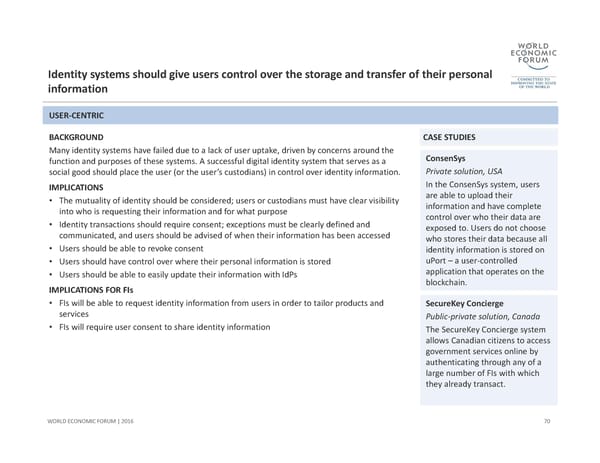Identity systems should give users control over the storage and transfer of their personal informationBACKGROUND Many identity systems have failed due to a lack of user uptake, driven by concerns around the function and purposes of these systems. A successful digital identity system that serves as a social good should place the user (or the user’s custodians) in control over identity information. IMPLICATIONS •The mutuality of identity should be considered; users or custodians must have clear visibility into who is requesting their information and for what purpose •Identity transactions should require consent; exceptions must be clearly defined and communicated, and users should be advised of when their information has been accessed •Users should be able to revoke consent •Users should have control over where their personal information is stored •Users should be able to easily update their information with IdPs IMPLICATIONS FOR FIs •FIs will be able to request identity information from users in order to tailor products and services •FIs will require user consent to share identity information 70 WORLD ECONOMIC FORUM | 2016 USER‐CENTRIC CASE STUDIESConsenSys Private solution, USA In the ConsenSys system, users are able to upload their information and have complete control over who their data are exposed to. Users do not choose who stores their data because all identity information is stored on uPort –a user‐controlled application that operates on the blockchain. SecureKey Concierge Public‐private solution, Canada The SecureKey Concierge system allows Canadian citizens to access government services online by authenticating through any of a large number of FIs with which they already transact.
 A Blueprint for Digital Identity Page 70 Page 72
A Blueprint for Digital Identity Page 70 Page 72